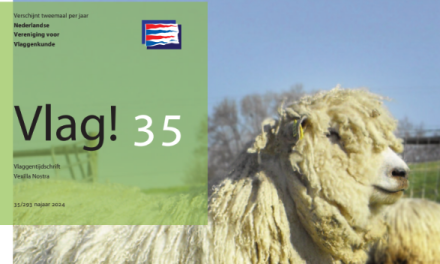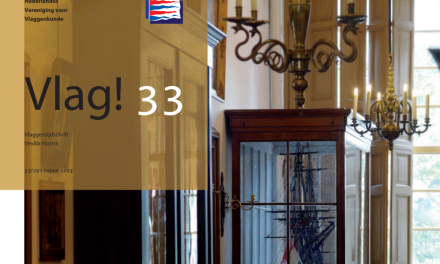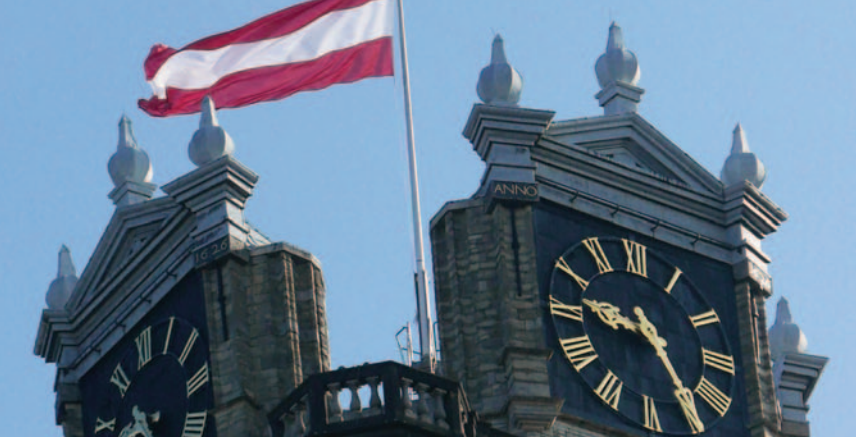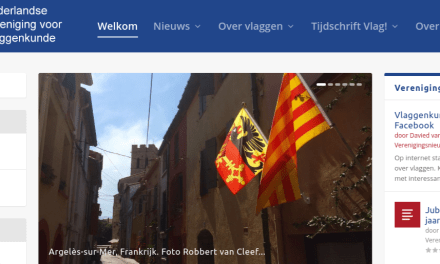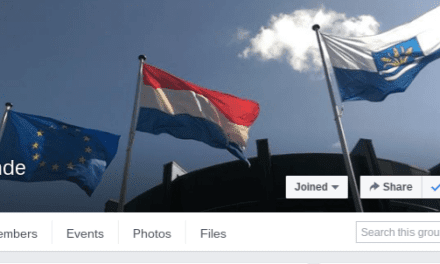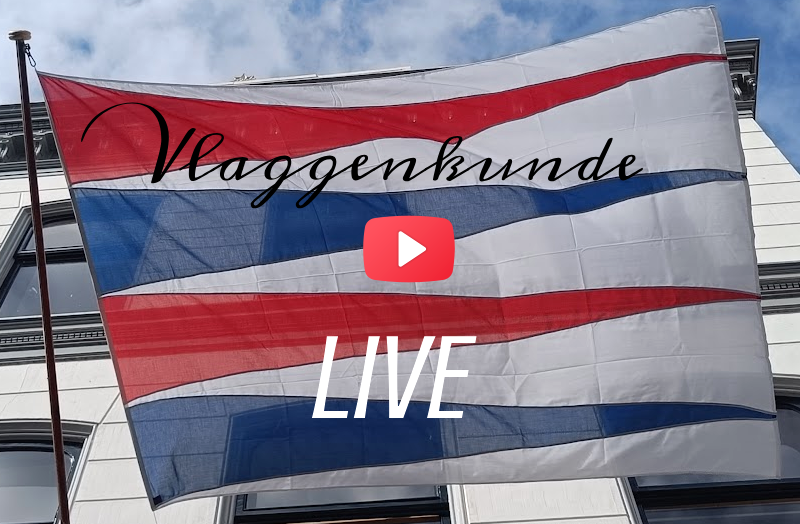The autumn issue of the Dutch vexillological magazine Vlag! is now available online. The magazine is published in Dutch but an English summary can be viewed below.
If you want to receive our magazine as soon as it comes out, please register as a member. You will receive Vlag! 28 as soon as possible and every new magazine when it is published!
Articles in Vlag! 27
Hoeksche Waard
The municipality of Hoeksche Waard was formed in 2019 by the amalgamation of the municipalities
of Oud-Beijerland, Binnenmaas, Korendijk, Cromstrijen and Strijen. At the end of 2019, the
municipality adopted a flag incorporating the symbols and colours of the abolished municipal flags.
Dominican Republic
The Dominican Republic has enacted a law regulating the use of national symbols. Disrespect to the
flag has become punishable.
Gambia
The state of Gambia is in the process of drafting a new constitution. The proposal defines the
national symbols as being as they were before the new constitution.
Land of Meuse and Waal
The area between the rivers Meuse and Waal, part of the province of Gelderland, has adopted a
regional flag depicting the two meandering rivers the Meuse and the Waal.
Belarus
Large scale demonstrations are taking place in Belarus against President Lukashenko, who is
suspected of election fraud. The protesters use the white-red-and-white flag that was carried by
White Russia in 1918 and 1991.
Mississippi
After Mississippi abolished its old flag sporting the Confederate Cross, a committee chose five
proposed designs for the new flag out of many drafts. The design New Magnolia emerged as the
winner. The flag was adopted on November 3rd.
Csango
The Csango, the Catholic Hungarian minority in Moldova, has adopted its own flag. The flag contains
the black and red of the national costume.
Guadeloupe
A petition calls for the establishment of a new flag for the Caribbean island of Guadeloupe. The
current flag contains the three fleur-de-lis of old France. This is now seen as a symbol of slavery
because runaways slaves that were recaptured were tattooed with the fleur-de-lis.
Flags in covid-19 times
In these covid-19 times, special flags were designed and hoisted. The St. Barbara Cathedral in Ghent
placed a white flag on the tower. Cartoons have been published in the form of the Chinese flag in
which the stars have been turned into viruses. Flags have also been designed and raised in honour of
healthcare staff.
Designing flags in the classroom
The Dutch TV childrens program “Het Klokhuis” (The Applecore) broadcast an episode in spring 2019
about the meaning of flags. From the various designs, the flag of Suze van As – Flag of the Earth –
was chosen and hoisted at the highest mast of the Rotterdam Flag Parade. Many schools followed up
on this broadcast and had children design flags.
Red-white-red flag of Dordrecht arrives only after 400 years
The flag of Dordrecht (horizontal tricolour red-white-red) and the coat of arms of Dordrecht (red with
a silver pale) are closely related to each other. But what came first, the flag or the arms? The coat of
arms appears on a painting from 1430. An account exists from 1284 about ordering white and red
linen for the manufacture of banners and pavillons. The flag of Dordrecht was officially established in
1857, but on paintings showing ships on the Merwede river in 1663 the ships carry a red-white-red
flag. The red-white-red colours were and are also used by the seamen’s college and water sports
associations.
A mysterious Tuscan flag
The Maritime Museum in Rotterdam holds a flag in the Austrian colours with the coat of arms of
Tuscany. The right half of the flag contains a large white square containing a smaller black square.
Perhaps the flag was used during the visit of Vice Admiral F.F. Leopold to Rotterdam in 1845. But he
has no known relation to Tuscany.
A Scandinavian type flag for South Jutland / Schleswig
The area in southern Denmark South –Jutland (from Danish) or Schleswig (in German) has had an
eventful history. It switched from Danish to German and back again. After the First World War, a
census was held with the result that the northern part was attributed to Denmark and the southern
part to Germany. On the occasion of the 100th anniversary of the area in 2020, P. Kristiansen
designed a flag for the entire area South Jutland/ Schleswig according to Scandinavian example.
The flag Rhineland Republic lives on by chance in the North Rhine-Westphalia flag.
After the First World War, Germany refused to pay the mandatory payments to the allied countries.
Consequently France occupied the part of Germany east of Luxembourg, Belgium and Limburg. The
urge for independence from Germany was large among the area’s population. From 1923-1924 the
area was independent under the name Rhineland Republic. It carried a green-white-red flag. After
the Second World War, the northern part was united with Westphalia in the Bundesland North Rhine
-Westphalia. The flag was composed of the colours of the old Prussian Rhineland and Westphalia,
coincidentally also green, white and red.
Heraldry and vexillology historically
The article states that flags are not always derived from coats of arms. Although flag use as it is today
started only in the 18th century, ships used flags much earlier to indicate in which state they were
under protection. Initially, the ships belonging to empires or kingdoms carried the coat of arms of the
monarch as a ship’s ensign, but at the end of the 13 th century flags were used at sea that had nothing
to do with royal arms. Like the St George’s Cross in England, the Danebrog of Denmark and the
Burgundian Cross. Most modern flags are not derived from the state coat of arms and therefore the
heraldic rules do not apply to flags.
Interested in more flag news and insights? Register as a member! You will receive Vlag! 28 as soon as possible and every new magazine when it is published!

